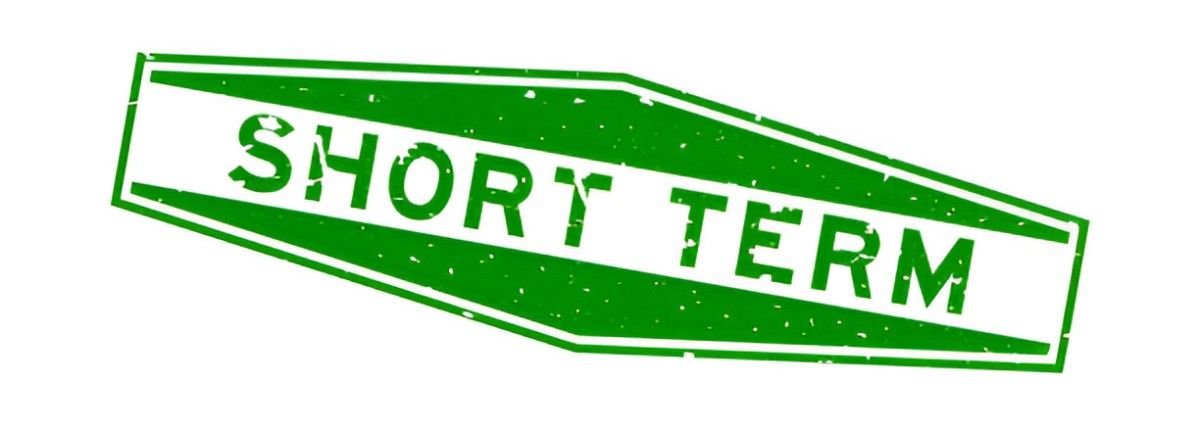Investing is a fundamental part of financial planning. While many people focus on long-term investment strategies like retirement savings or wealth building, short-term investment goals are equally important. These goals can range from saving for a vacation to building an emergency fund or making a large purchase. The beauty of short-term investments lies in their ability to provide liquidity and meet immediate needs without taking on unnecessary risk. I want to take you through a detailed exploration of how to approach short-term investment goals, the options available, and how you can determine the right path based on your personal circumstances.
Table of Contents
Defining Short-Term Investment Goals
Before diving into specific strategies, it’s important to define what “short-term” means in the context of investing. Generally, short-term investments refer to financial goals you want to achieve in a timeframe of 1 to 3 years. These are typically lower-risk investments, as the goal is to preserve your capital and maintain liquidity, rather than aiming for high returns.
I’ve found that people often misunderstand the importance of short-term investments. Many think that if the goal is only a few years away, there’s no need to invest at all—savings accounts or just stashing cash at home seem safer. But that’s where I’ve seen many miss an opportunity to grow their funds while staying low-risk. Short-term investments can be an essential part of a comprehensive financial plan, even if the timeframe is brief.
Why You Should Invest for Short-Term Goals
I’ve often come across the idea that short-term goals don’t warrant investment, especially with the constant temptation of low-risk, low-return savings accounts. However, keeping your money in a savings account can actually be detrimental to achieving your short-term goals. While savings accounts offer safety, they also provide extremely low returns, typically not enough to outpace inflation. Here’s a simple example:
- Savings Account Interest: Most savings accounts today offer around 0.5% to 1% annual interest.
- Inflation: The inflation rate in most economies hovers around 2% to 3% per year.
When you combine those two numbers, you’ll see that, effectively, your savings in a typical account may lose purchasing power over time.
Types of Short-Term Investments
Now that we understand the importance of short-term investing, let’s explore the options available. I’ll go over a few strategies that I believe are suitable for people who are aiming to achieve financial goals in the near future. For the sake of simplicity, I will focus on low-to-moderate risk investments, as these are more appropriate for short-term goals.
1. High-Yield Savings Accounts (HYSA)
I’m sure you’re familiar with regular savings accounts, but high-yield savings accounts (HYSAs) are another story. They offer better interest rates than typical savings accounts, with rates ranging from 3% to 4% annually, depending on the bank and the current economic environment. While still considered low-risk, the returns are typically better than what you would get from a traditional savings account.
| Feature | High-Yield Savings Account |
|---|---|
| Risk Level | Low |
| Liquidity | High (easy to access) |
| Average Return | 3% – 4% per year |
| Pros | Low risk, easily accessible |
| Cons | May not outpace inflation significantly |
2. Certificates of Deposit (CDs)
Another option is certificates of deposit (CDs). These are a type of deposit offered by banks with a fixed term—usually between 3 months and 5 years—and a guaranteed return. In exchange for locking your money for a set period, you earn a fixed interest rate, which can sometimes be higher than a standard savings account.
However, the trade-off is that you can’t access your money until the term ends without paying a penalty. I’ve found that they are great for people who know they won’t need the funds before the maturity date. Here’s how a 12-month CD compares with a high-yield savings account:
| Feature | 12-Month CD |
|---|---|
| Risk Level | Low |
| Liquidity | Low (penalties for early withdrawal) |
| Average Return | 4% – 5% per year |
| Pros | Fixed returns, guaranteed |
| Cons | Penalty for early withdrawal |
3. Money Market Accounts
Money market accounts (MMAs) are another low-risk investment option that combines the liquidity of a savings account with the interest rates of a CD. These accounts typically offer higher returns than traditional savings accounts, but they may require a higher minimum balance. If you are looking to park a significant amount of money without taking too much risk, MMAs can be an excellent choice.
| Feature | Money Market Account |
|---|---|
| Risk Level | Low |
| Liquidity | High (but with some restrictions) |
| Average Return | 2% – 3% per year |
| Pros | Higher returns, liquidity |
| Cons | Higher minimum balance requirements |
4. Short-Term Bonds
Short-term bonds or bond funds are another low-risk option I would recommend for a short-term investment. These bonds typically mature in 1 to 3 years, making them a good fit for short-term financial goals. They offer steady returns and a predictable stream of income, though they are more exposed to interest rate risk than savings accounts or CDs.
I’ve often used short-term bond funds in my own strategy for investing in the near term. Here’s how a 1-3 year bond fund typically compares to the other options:
| Feature | Short-Term Bonds |
|---|---|
| Risk Level | Moderate (subject to interest rate fluctuations) |
| Liquidity | Moderate (easy to sell, but value may fluctuate) |
| Average Return | 2% – 4% per year |
| Pros | Predictable income, moderate returns |
| Cons | Subject to interest rate fluctuations, less liquidity than savings accounts |
5. Peer-to-Peer (P2P) Lending
Peer-to-peer lending platforms allow you to lend money to individuals or small businesses in exchange for a potential return. While P2P lending has become increasingly popular, it’s important to note that it carries a higher level of risk compared to the other options I’ve mentioned. The risk comes from the potential for borrowers to default on their loans.
While I wouldn’t suggest this option for someone looking for safety, I’ve seen it work well for those who are comfortable with taking on more risk for the chance of higher returns (ranging from 5% to 8% annually). Here’s how P2P lending stacks up against the other choices:
| Feature | Peer-to-Peer Lending |
|---|---|
| Risk Level | High (borrower default risk) |
| Liquidity | Low (can be difficult to sell loans early) |
| Average Return | 5% – 8% per year |
| Pros | Higher returns |
| Cons | Risk of borrower default, lower liquidity |
Factors to Consider When Choosing a Short-Term Investment
When choosing an investment strategy, I always recommend considering the following factors:
1. Your Investment Timeframe
The length of time until you need the funds plays a significant role in determining which investment options are right for you. If you’re planning to make a purchase in a few months, a savings account or money market account may be the best fit. If you have a year or more, you may consider a CD or a bond.
2. Risk Tolerance
This is where I’ve seen many people get confused. While short-term goals don’t require you to take excessive risk, they do require some level of understanding of your comfort zone. If you’re uncomfortable with the thought of losing money, focus on low-risk options like savings accounts and CDs. If you’re willing to take some risk for higher returns, you might consider peer-to-peer lending or short-term bonds.
3. Liquidity Needs
Liquidity refers to how quickly you can access your money. If you might need the money quickly, I suggest focusing on high-yield savings accounts or money market accounts, as they offer easy access to funds. On the other hand, if you’re certain you won’t need access to your funds for the duration of your investment term, you might choose a CD or bond.
Conclusion
Short-term investments are often overlooked, but I’ve come to realize that they play a critical role in a well-rounded financial strategy. By taking the time to select the right option for your needs, you can grow your money while minimizing risk. High-yield savings accounts, CDs, and money market accounts provide low-risk options with reasonable returns, while short-term bonds and peer-to-peer lending can offer higher yields if you’re willing to take on more risk.
By considering your investment goals, risk tolerance, and liquidity needs, you can make informed decisions that will help you achieve your short-term financial objectives. Ultimately, the right short-term investments will help you balance growth and security, setting you up for success both now and in the future.





